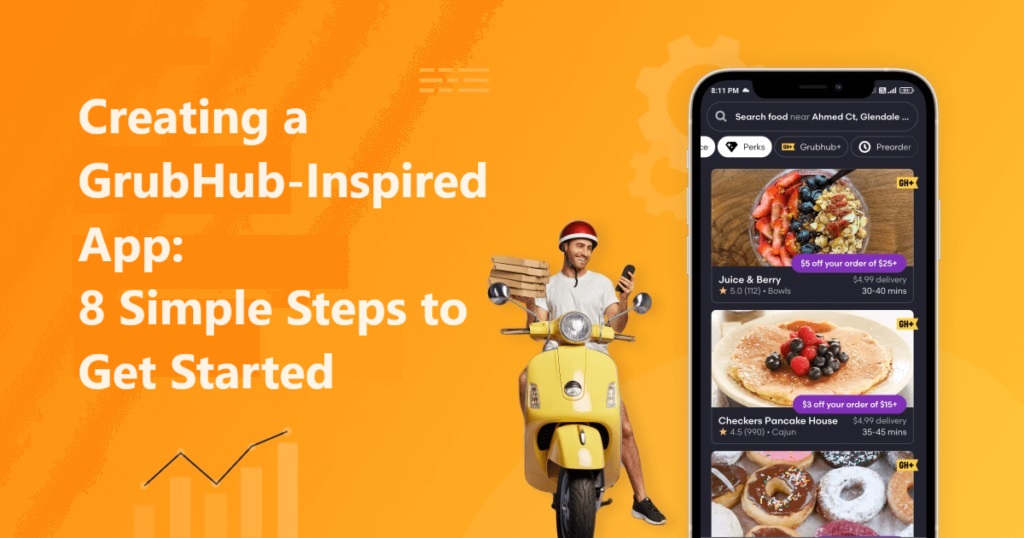
The need for meal delivery services has increased significantly in the fast-paced world of today. You’ve come to the right place if you want to take advantage of this trend and develop your own food delivery app that is modeled after GrubHub Clone. We’ll lead you through 8 easy stages in this article to help you get started on the road to creating a profitable food delivery service.
It’s imperative to carry out careful market research before jumping right into app development. Determine your target market, comprehend their tastes, and evaluate your rivals. High-volume keywords like “food delivery app,” “online food ordering,” and “restaurant delivery service” might help you determine market trends and consumer expectations.
You need a compelling USP to stand out in the crowded market for meal delivery apps. Give real-time order tracking, exclusive restaurant partnerships, a variety of food selections, easy payment methods, and other features some thought. Your USP should provide solutions to the problems your target audience is experiencing.
A thorough and well-organized business strategy is the cornerstone of your food delivery app company. This crucial document should provide a clear road map for the success of your app by outlining your goals, financial estimates, budget, and advertising approach. You may easily locate resources and templates online by searching for popular terms like “business plan for food delivery app” or “Grubhub clone business plan.”
As you work to develop a successful meal delivery service, incorporating techniques and insights from well-established competitors like Grubhub can be especially illuminating. By carefully creating your business plan, you increase your chances of long-term success by laying the groundwork for a strong and strategic entry into the cutthroat world of food delivery.
The performance and scalability of your app depend on the technology stack you choose. You’ll require dependable frontend, backend, and database technologies. You can use popular search terms like “app development technology stack” to help you make wise choices.
A user interface (UI) and user experience (UX) that smoothly integrate user-friendliness and aesthetic appeal are necessary to maintain user engagement and retention. Investing in the skills of qualified app designers who can create a UI/UX for your Grubhub clone that is not only simple to use but also visually appealing will improve the user experience as a whole.
You can use well-known keywords like “mobile app UI/UX design” while keeping the unique context of your Grubhub clone in mind to find the ideal applicant or team for this crucial step. Working with seasoned experts who can improve your app’s design will guarantee that it appeals to consumers, promotes usability, and ultimately improves the user experience as a whole. A competitive meal delivery app market exists now, and keeps the users engaged and lively.
The technical portion is now complete—app development. You have the option of hiring an internal development team or contracting with skilled developers. High-volume search terms like “app development for food delivery” will assist you in locating qualified individuals or development companies to create your app.
Make sure your app is fully tested to ensure faultless operation. Check for performance, security, and usability. To give your users a smooth experience, swiftly fix any flaws or problems. High-traffic keywords like “mobile app testing” and “quality assurance for food delivery apps” will help you go through this stage.
It’s time to launch your app on the app stores after it is finished. Promote it through a variety of marketing techniques, such as social media, email marketing, and collaborations with nearby eateries. You can develop a successful marketing strategy with the aid of popular keywords like “app launch strategy” and “food delivery app marketing”.
Customer feedback and iteration are optional steps.
Following the initial launch, closely monitor user comments. Adapt your app constantly to client feedback and shifting market trends. High-volume keywords like “app iteration for food delivery” and “customer feedback analysis” can help you in this continuous process of improvement.
In conclusion, developing a meal delivery app that is modeled after GrubHub Clone requires rigorous strategy, investigation, and implementation. You can improve your chances of creating a successful app that meets the rising demand for easy meal delivery services by following these 8 basic steps, getting up to date on industry developments, and using high-volume keywords. Never forget that adaptation to the always-changing market and ongoing improvement are the keys to long-term success.